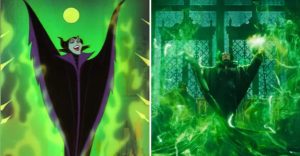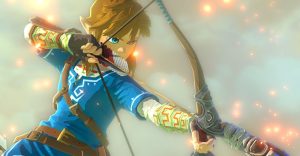Captain America’s Mjolnir Moment in Endgame Was Set Up In Phase 1

The question of Captain America’s worthiness is a huge one and is behind arguably the greatest MCU moment of all time: when Cap lifts Mjolnir in Avengers: Endgame, and crucially, it was all set up in phase 1. Obviously, it was foreshadowed in Avengers: Age Of Ultron, but to consider that the only key part of this loaded question is to overlook important parts of Cap’s story. Because it’s Steve Rogers’ own belief in his worthiness – and also his infamous resilience – that is even more important.
In the wake of Avengers Age of Ultron‘s notorious worthiness competition – which was only ever played as fan-baiting at the time – both Kevin Feige and Joe Russo have said they believed Cap was always worthy and he was protecting Thor’s ego by not lifting Mjolnir. But Age of Ultron‘s writer Christopher Markus said Cap wasn’t yet worthy, and the writer of a project trumps both producer and later director in the series when it comes to “Word of God”, even in the MCU. So it’s far from a concrete issue. Most intriguing is the theory that Captain America was on the path to worthiness, but his own self-doubt or the secrets he knew of Bucky were holding him back.
Even if you accept that Cap was worthy or was almost worthy by the time he slightly moved Thor’s hammer in Age of Ultron, the events of Civil War could well have changed things, and at the very least would have impacted Steve’s own self-assessment of worthiness. His decision to protect Bucky for the greater good and mask the truth about the murder of the Starks from Tony would have changed how he saw himself. Given that Thor himself questioned his worthiness after Infinity War, there’s precedent to accept that Cap would have considered himself “unworthy”. Add to that the lore of Mjolnir’s need to be lifted by a warrior – as set out in the comics – and there’s further food for thought. But most important, despite all of this possible doubt, is the fact that Steve’s superpower all along was his resilience. Ultimately, the same drive that makes him get up from every knock-down and to stand up to any bully, no matter what the size of the threat, is what gives him the belief to pick up Mjolnir.

At the point he picked up the hammer, Steve was desperate: Thanos had gained the upper hand on him already and was about to kill Thor. Mjolnir was his only hope, but he had little reason to believe that the hammer would respond to him. It was a tactical play made out of faith and hope but also fuelled by the same sense of resilience and defiance of the odds that made Steve stand up to the bully in The First Avenger. In a franchise that mostly avoids using catchphrases, that moment outside the cinema gave the MCU its most famous, and it was Steve’s “I can do this all day” spirit that dictated his Mjolnir choice.
According to Age of Ultron‘s writer and the logic of Captain America’s arc, he should have accepted defeat even before he lifted the hammer, but Steve Rogers was not a man to accept defeat. No matter what the circumstances. It may have seemed dangerously impulsive, but it was an act of defiance that determined Dr. Erskine’s choice of Steve as his prime Project Rebirth candidate back in the 1940s. He saw Steve’s willingness to find alternative solutions, to ignore the rules where necessary, and to ignore the likelihood of defeat as indicators of his worthiness, and they were exactly why Cap was able to finally prove it in Avengers: Endgame.
- Eternals (2021)Release date: Nov 05, 2021
- Doctor Strange in the Multiverse of Madness (2022)Release date: May 06, 2022
- Thor: Love and Thunder (2022)Release date: Jul 08, 2022
- Black Panther: Wakanda Forever/Black Panther 2 (2022)Release date: Nov 11, 2022
- The Marvels/Captain Marvel 2 (2023)Release date: Feb 17, 2023
- Ant-Man and the Wasp: Quantumania (2023)Release date: Jul 28, 2023
- Guardians of the Galaxy Vol. 3 (2023)Release date: May 05, 2023
About The Author

















